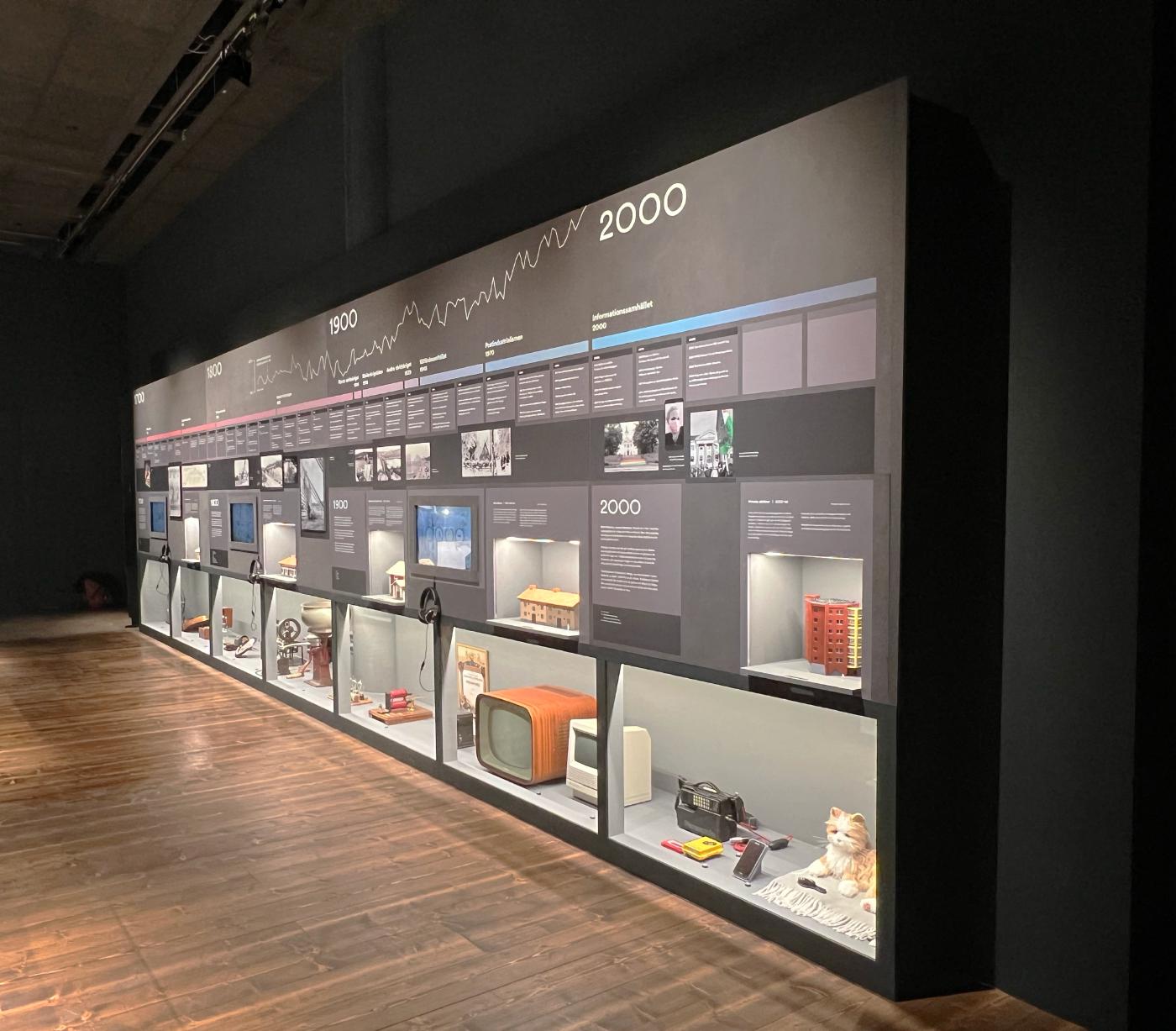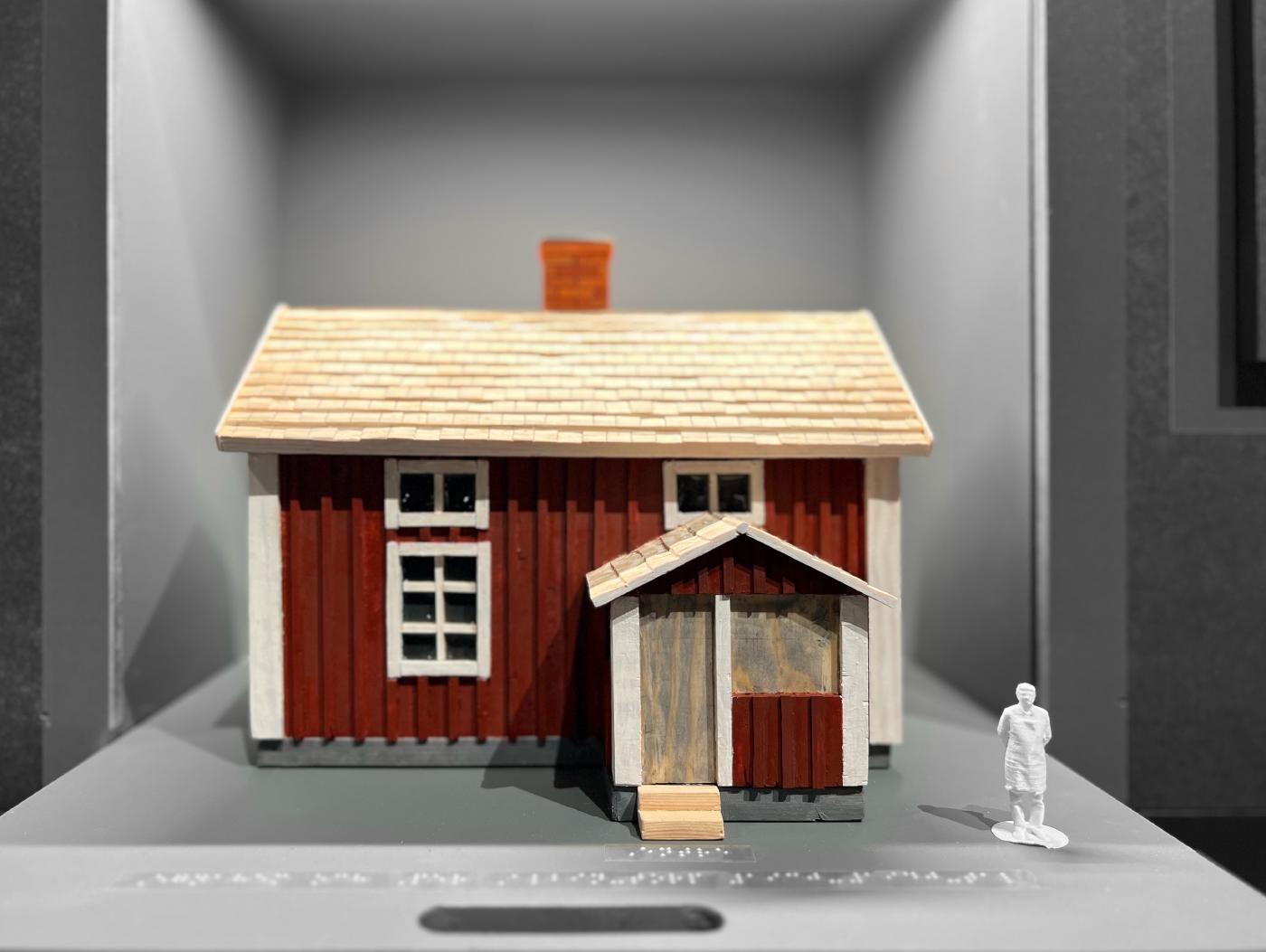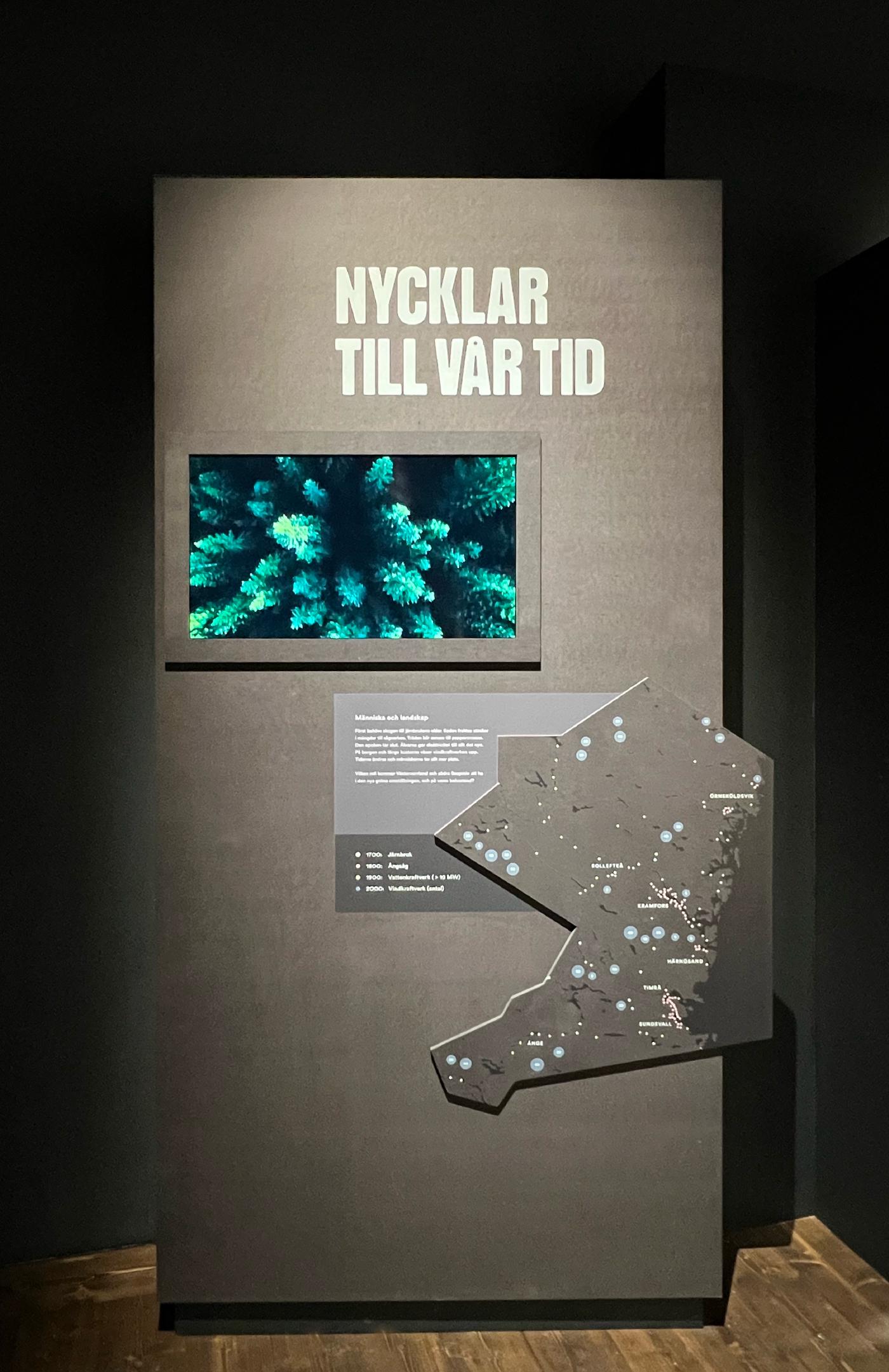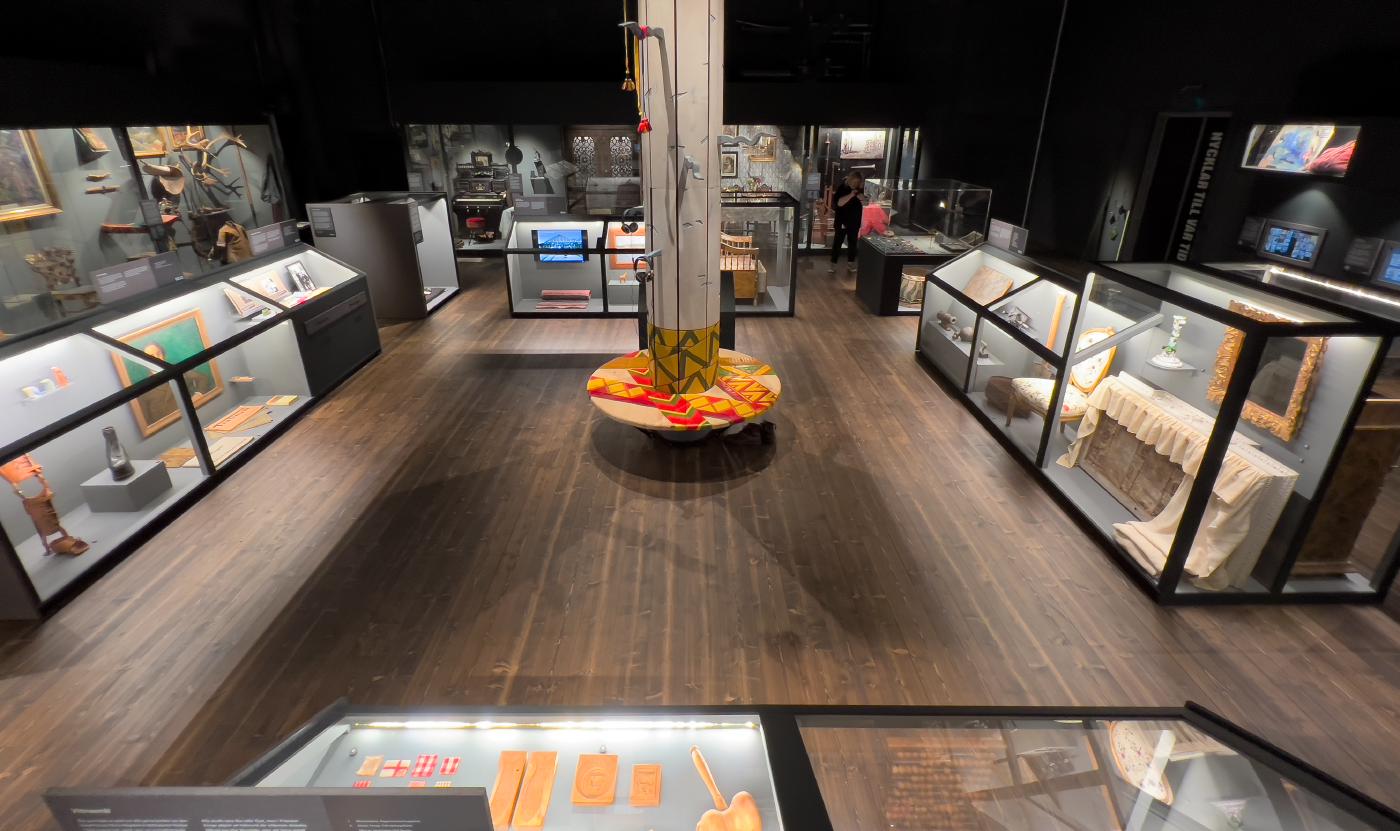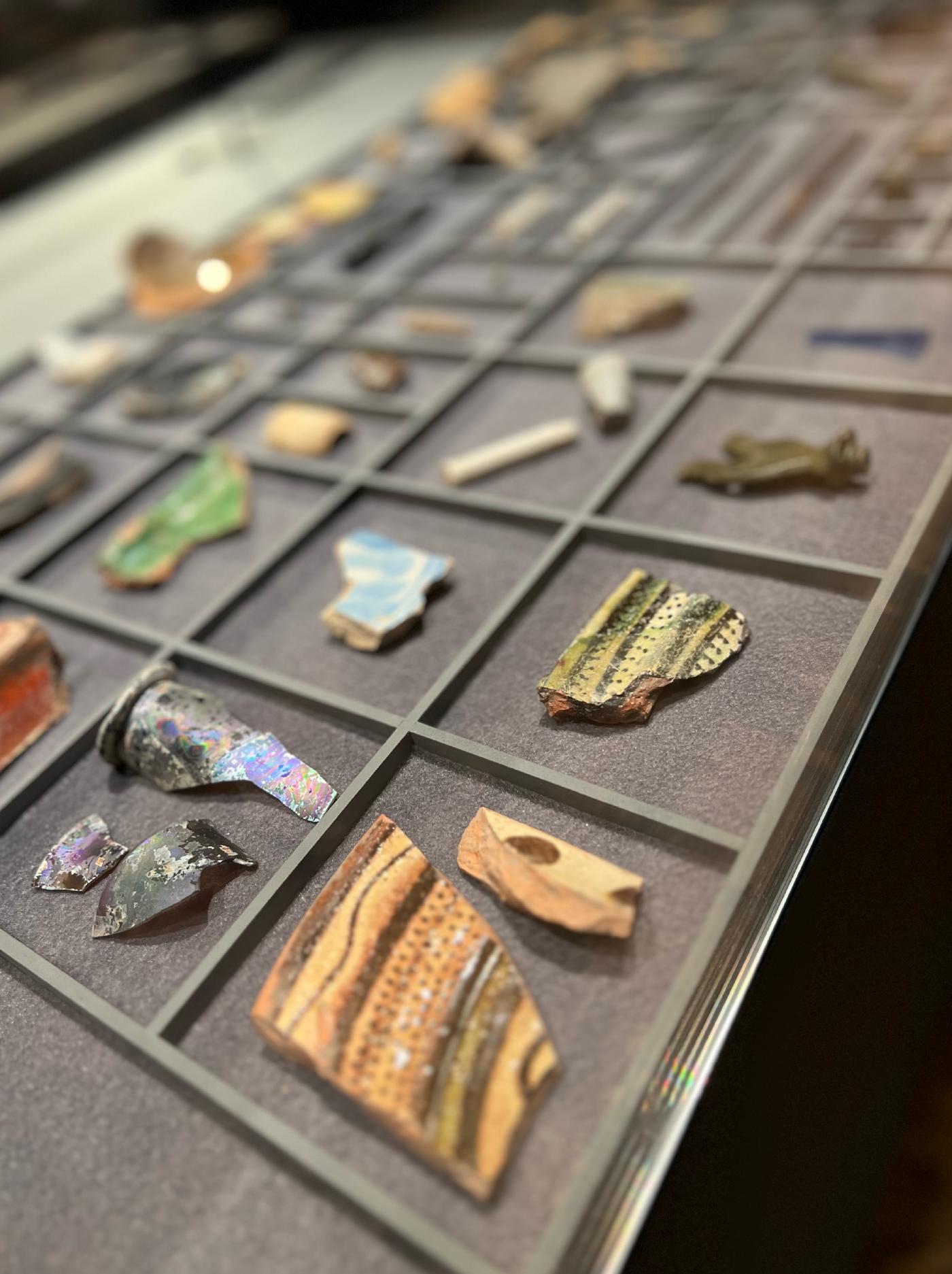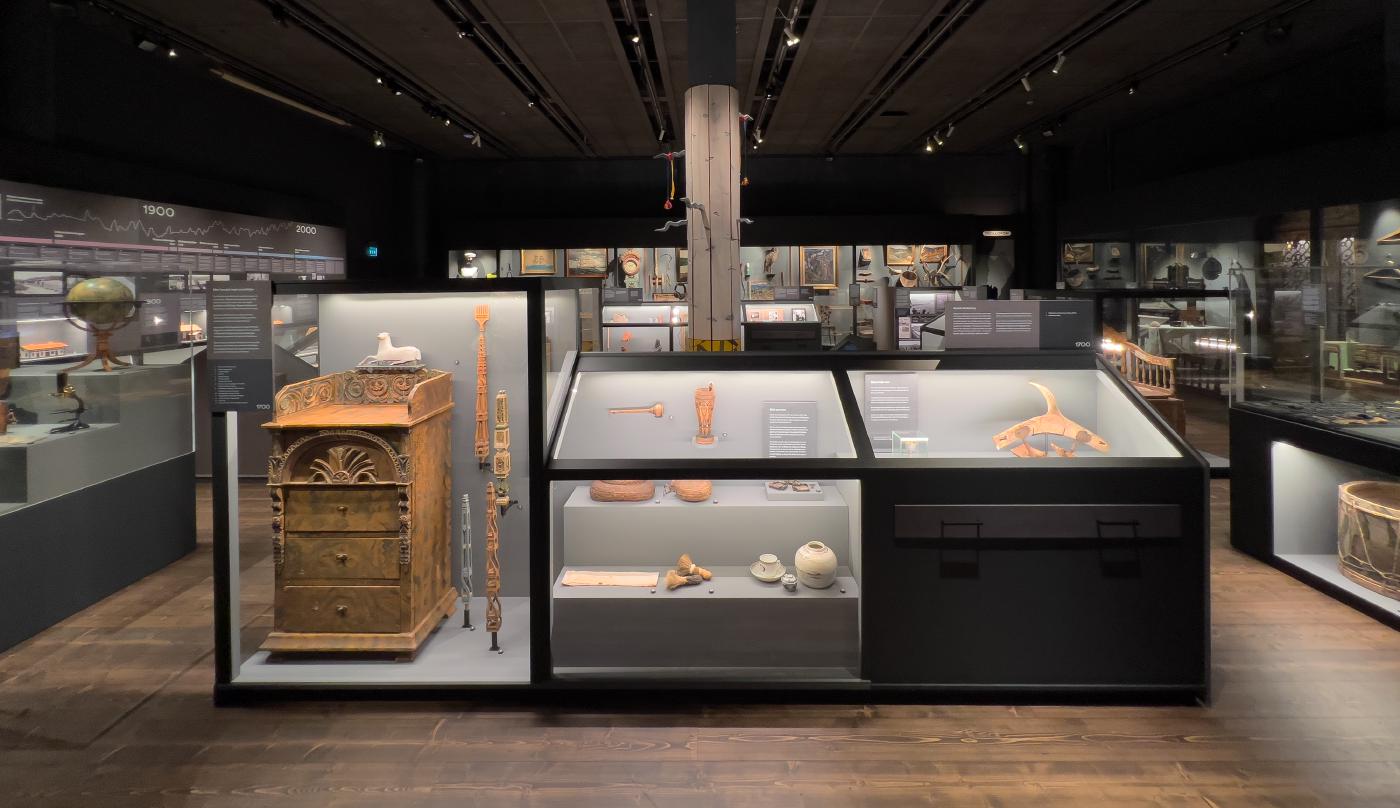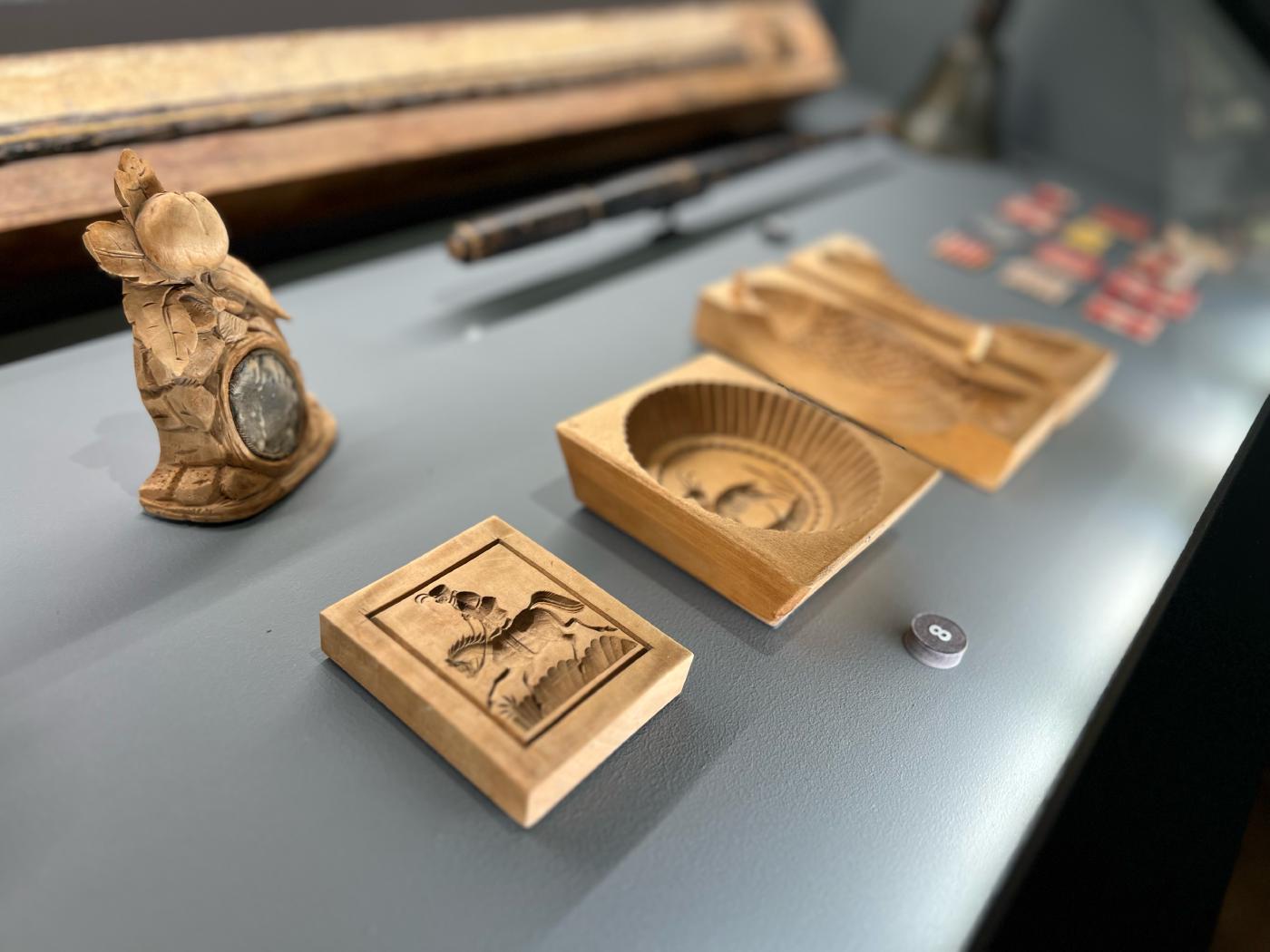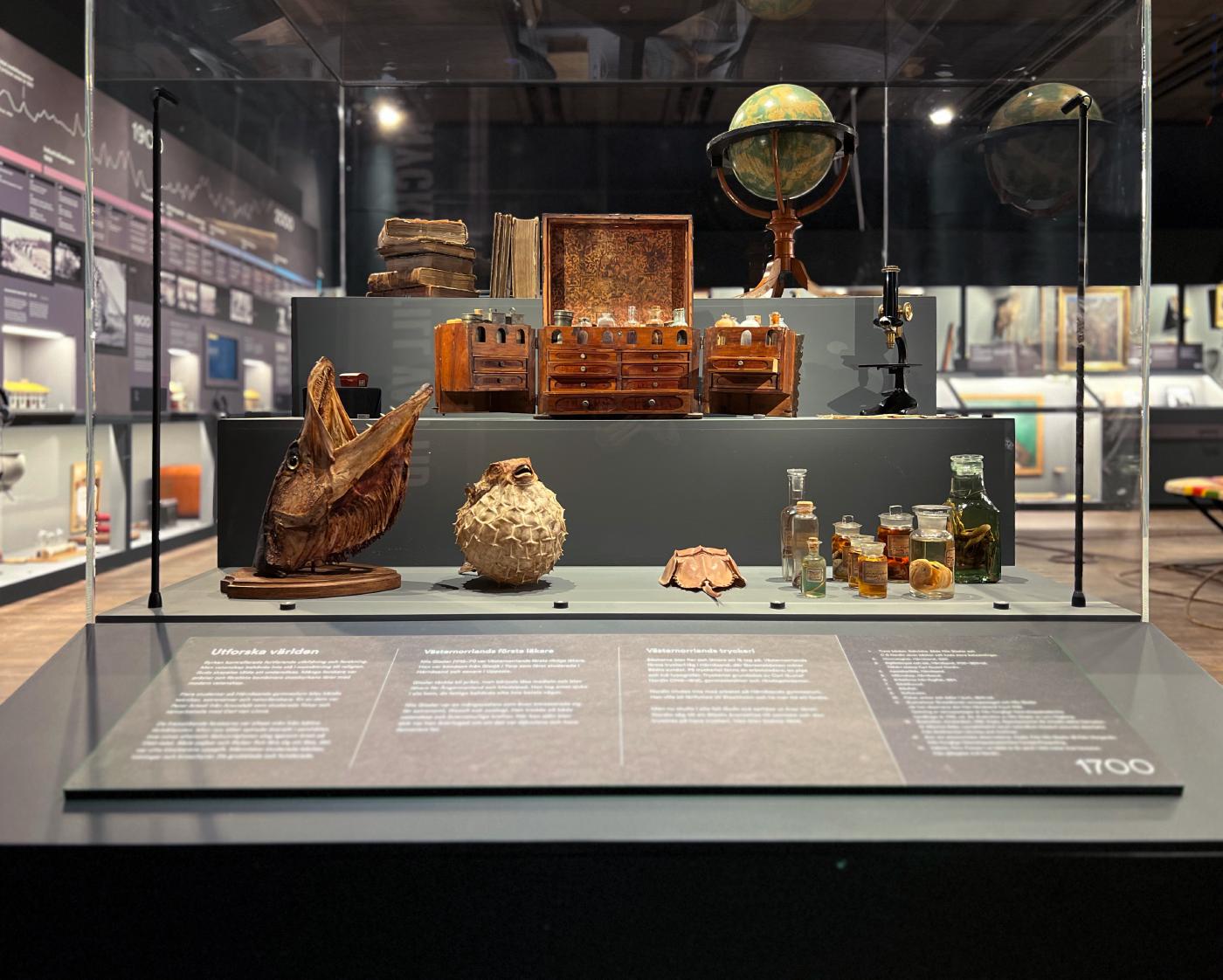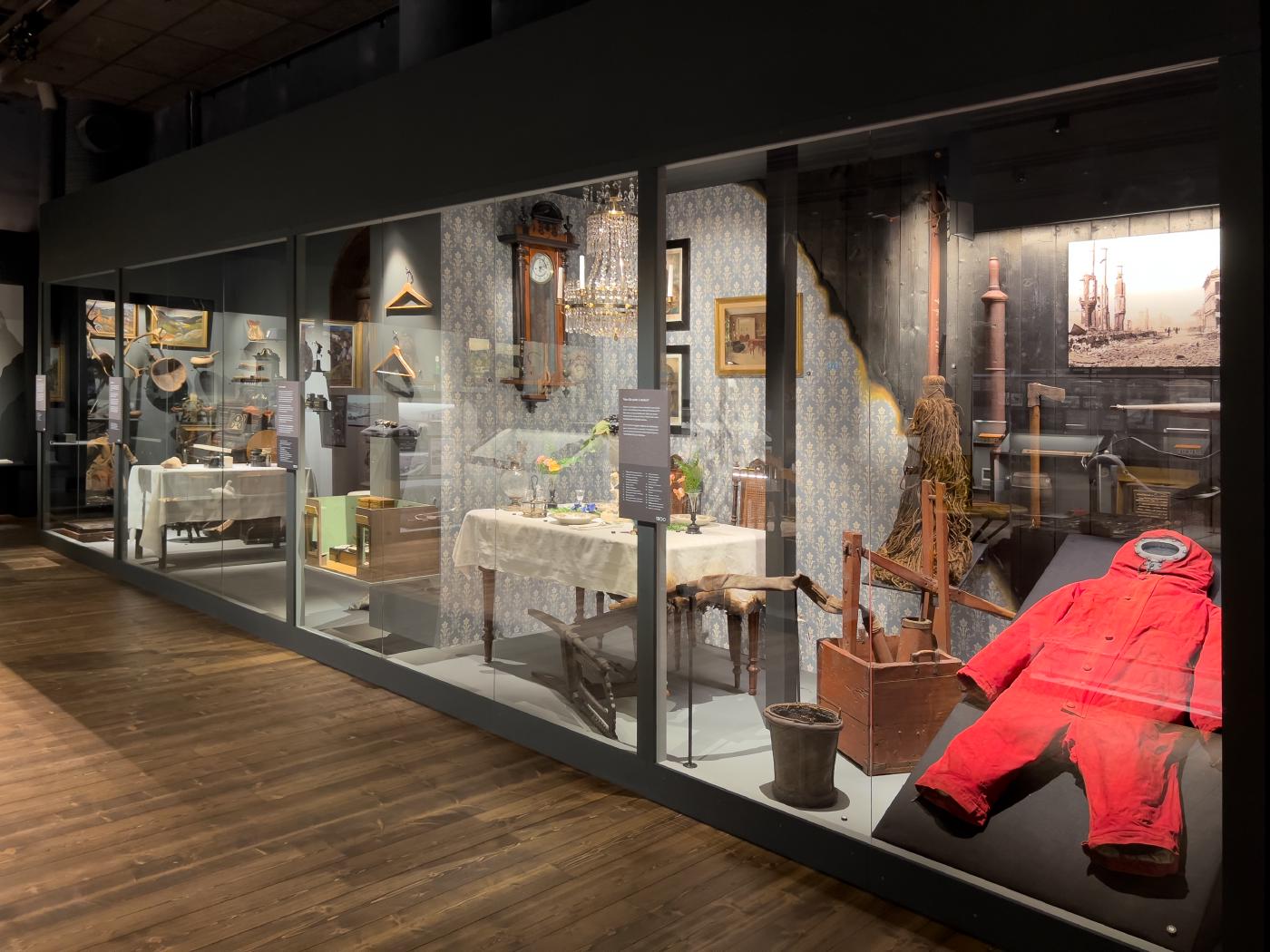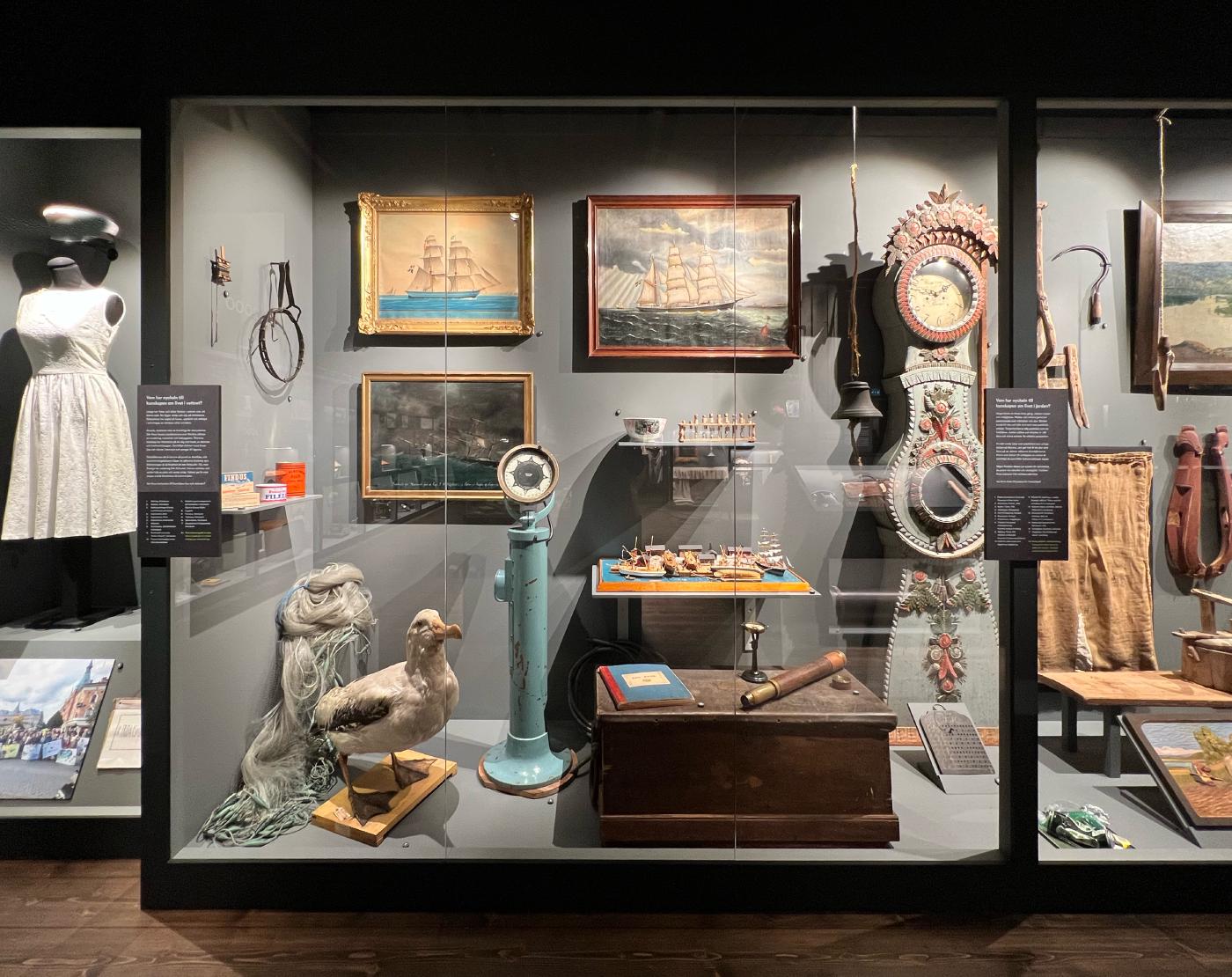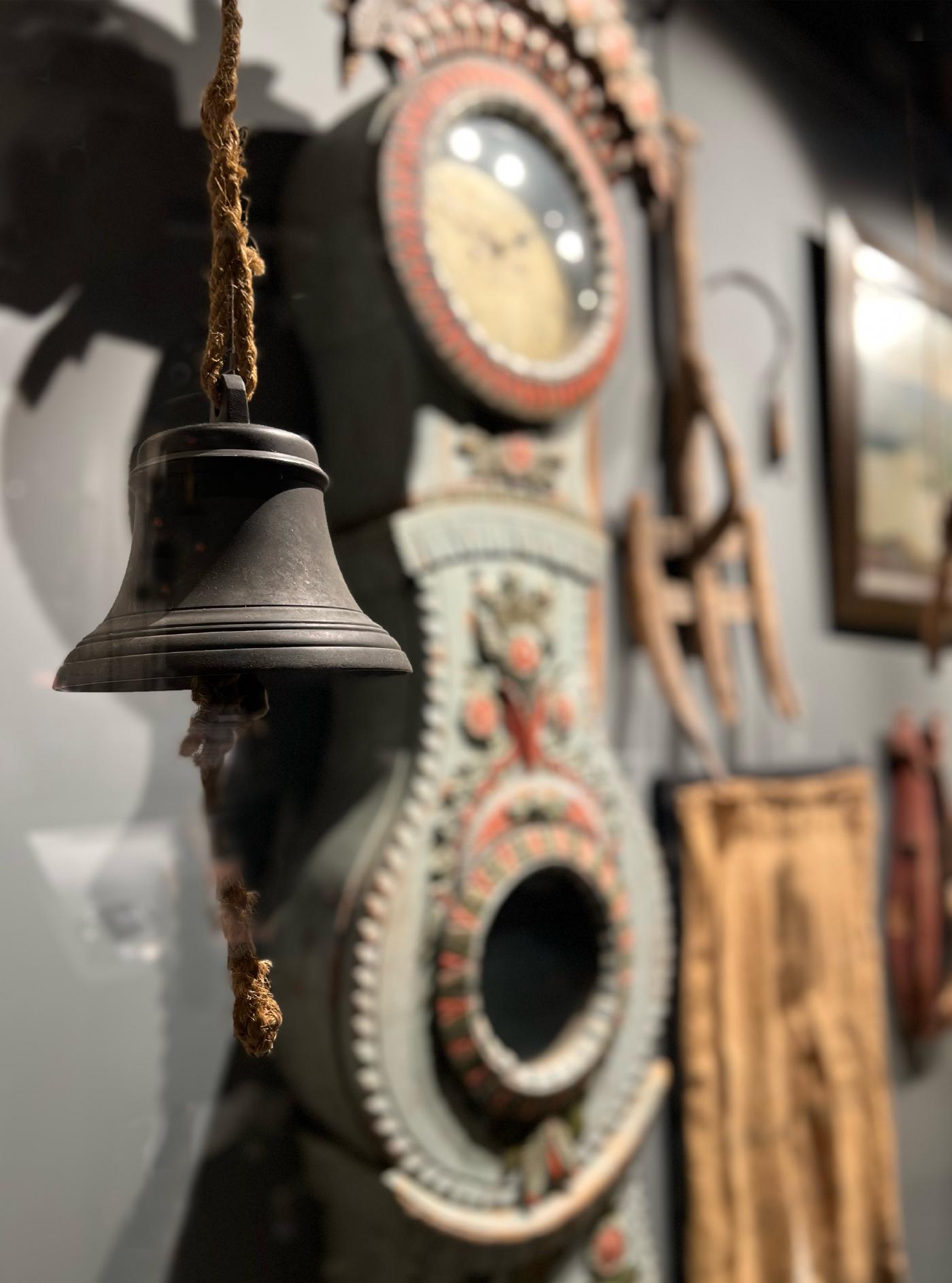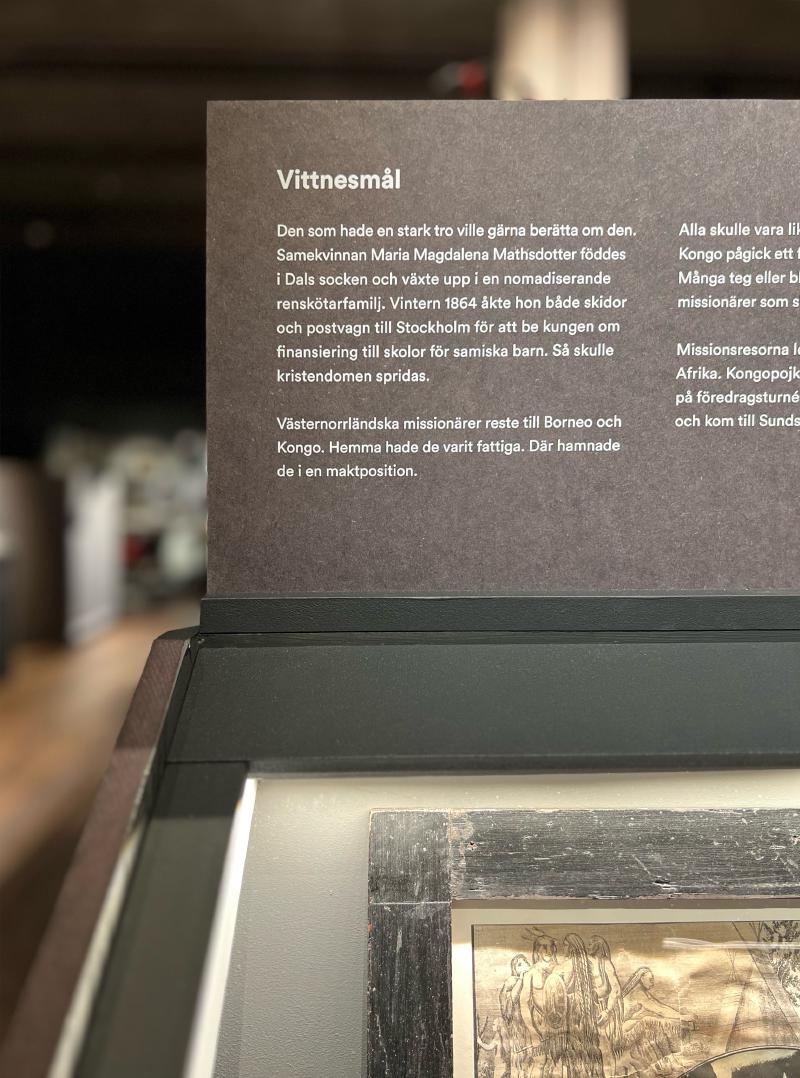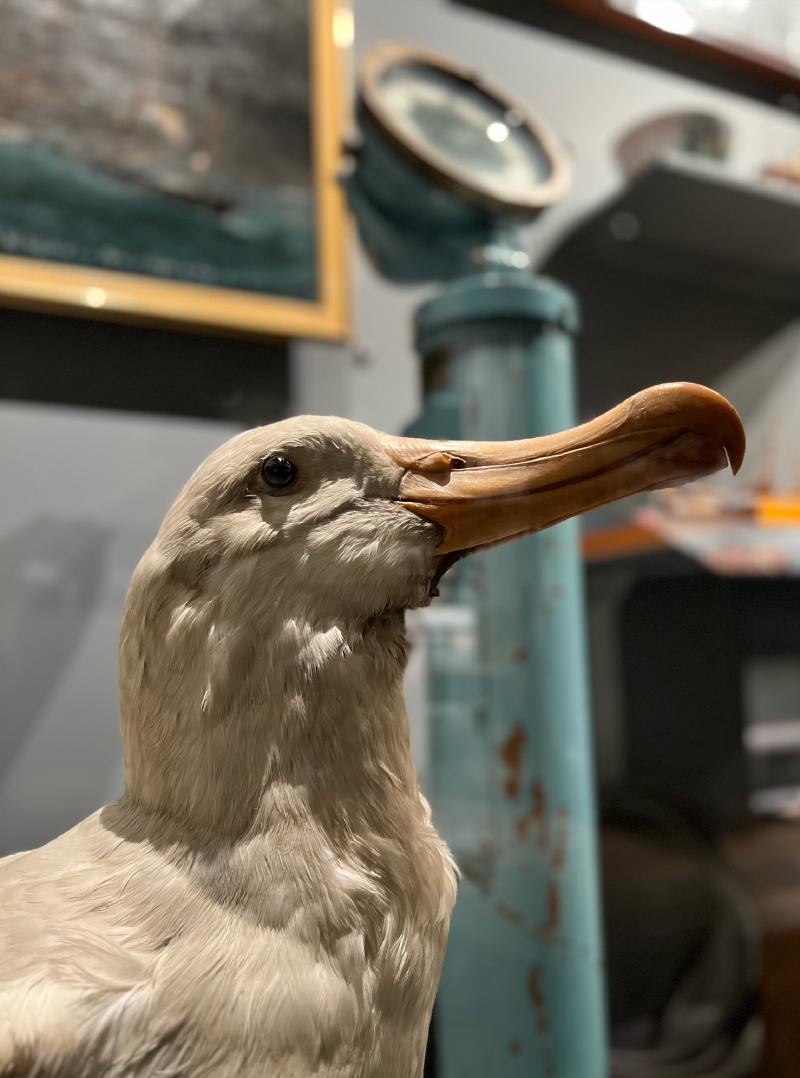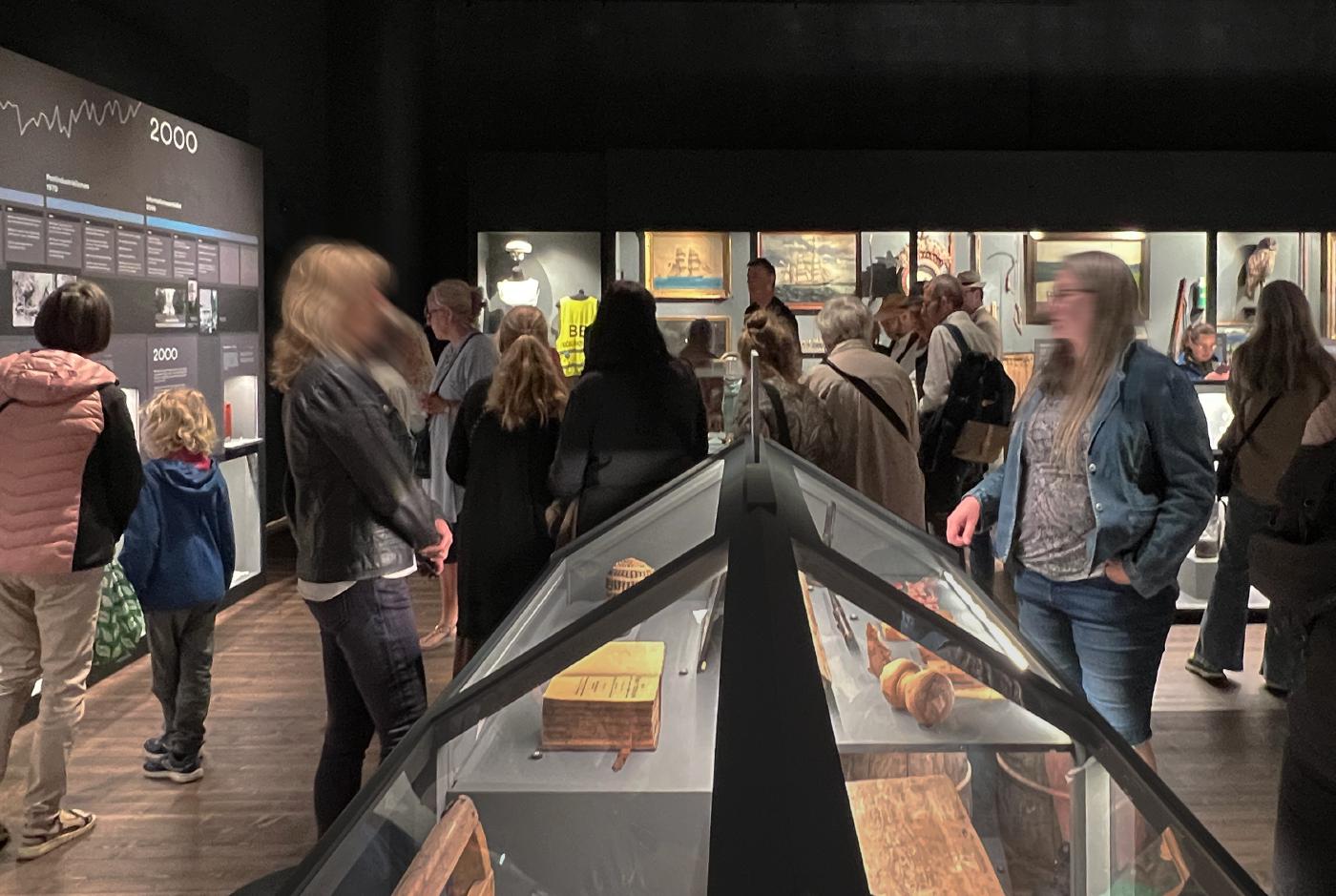Keys to our time
Västernorrlands muserum
The path leads to tomorrow
300 objects lead out to the entire world, from the year 1700 until today, and beyond.
Keys to our time is a permanent exhibition about Västernorrland from the 18th century until today, and beyond. AO has developed the concept, exhibition design and graphic design for the exhibition.
The focus is on key events in the county’s history presented chronologically, with an emphasis on ample room for artifacts and archaeological finds – which number over 300 in the exhibition.
One wall is dominated by a ten meter long timeline that divides the square room by century. The displays that belong to each century branch out from the corresponding section of the timeline wall. The three other walls have glass displays focusing on different themes.
The floor displays are positioned so they form an open square in the middle of the room. There is a tree sculpture to sit around that delves into Southern Sami culture and also gives a view over the entire room. Larger groups can also gather here for guided tours.
The timeline divides the exhibition space into centuries: 1700, 1800, 1900 and 2000. The displays that belong to each century branch out from the corresponding section of the timeline wall.
The ten-meter-long timeline presents each century through image and text, with important events for each decade, immersive material on touch screens and architectural models from different eras. The models are designed with and for the visually impaired, with scale figures and explanatory text in braille. Technical innovations from each century are displayed in glass cases along the floor.
In the middle of the room, Sami craftswoman Birgitta Ricklund has carved the sculpture “Släktband” (“Family ties”) which also functions as a bench. Here you can find further in-depth information about southern Saepmie, via films, different dialects in headphones and more.
The 18th century is presented in three stands with the themes of science, trade and war. Many prominent scientists came from Västernorrland. There was much to discover and exploit in the county's wild nature. This led both to long-distance international trade and to conflicts. The Russians ravaged and burned along the coast after Sweden lost the Great Northern War.
The great fire that completely destroyed Sundsvall in 1888 – the biggest fire in Swedish history – is presented scenographically as an elegantly furnished salon half burnt down, where charred wooden paneling is visible behind the burnt wallpaper. Next to it, the firefighting tools of the time are shown.
A key event in the county's history is the demonstrations in Ådalen in 1931. Five people taking part in a labor demonstration were shot and killed by the military. A protester blew "cease fire" on his trumpet which made the military stop firing. The event is thoroughly presented via court records and other documentation from the time The next day, 150,000 people protested at Gärdet in Stockholm.
From the exhibition opening 24 May 2024.


